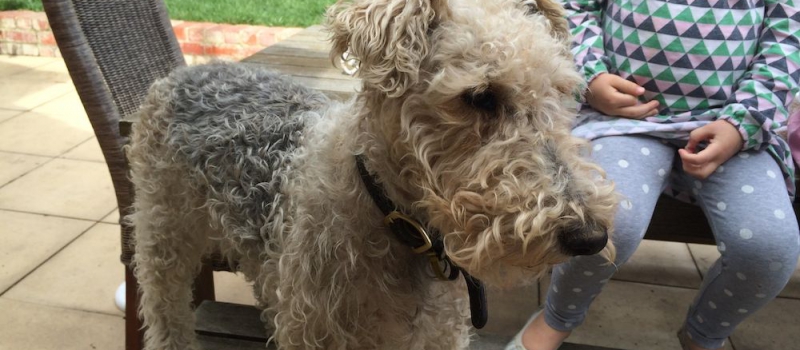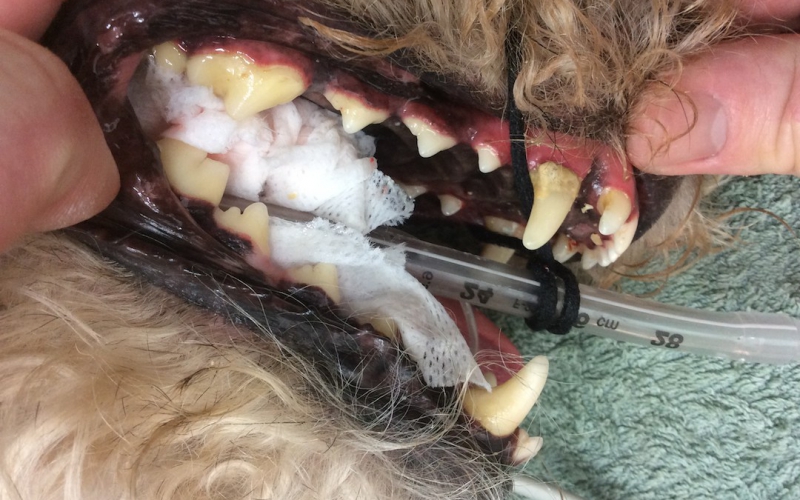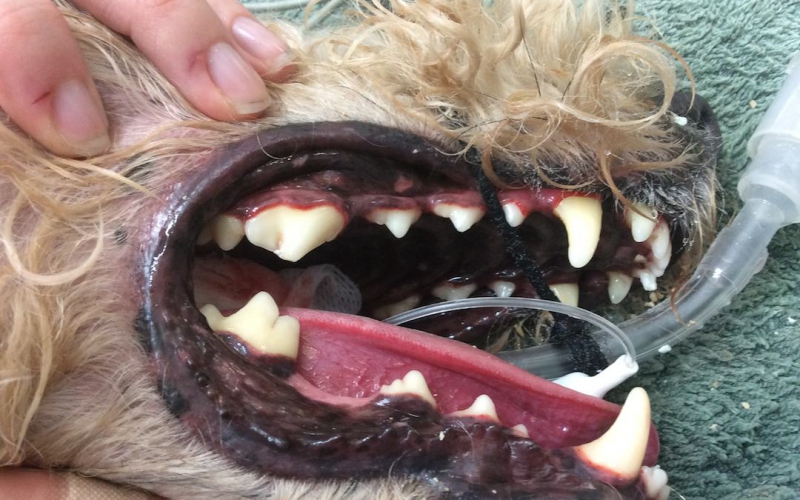scar’ or ‘Ozzie’ is a 10 year old wire haired fox terrier. Recently during his 6-monthly Seniors Health Check Dr Natasha noticed some build up of tartar and redness of his gums and Oscar’s owners had also noted that his breath had become a bit smelly. Other than the bad breath Oscar had been doing fine though he seemed less keen on eating his dry food than he had been in the past.
Oscar was booked in for an anaesthetic to assess his teeth properly, with a view to cleaning the teeth to remove calculus or tartar then polishing the teeth. Under anaesthetic his teeth would be assessed to decide if any need to be removed.
“The ancestors of domestic dogs and cats had to work a lot harder for their food which involved chewing on skin and bone which helped to keep the teeth clean”

Dental disease in dogs and cats is one of the most commonly detected diseases in veterinary practice.
Unlike human teeth, dog and cat teeth are fairly resistant to developing cavities. Dental disease in dogs and cats usually involves infection and inflammation along the gum line where the hard surface of the teeth joins the gums (periodontal disease and gingivitis). See Oscar’s photos and note the red line of inflammation.
The ancestors of domestic dogs and cats had to work a lot harder for their food which involved chewing on skin and bone or through vegetable matter to obtain high energy food. This chewing action helped to keep the teeth clean. Most modern pet foods have much higher energy levels and require less chewing for cats and dogs to achieve their daily energy requirements.
Oscar had his surgery performed by Dr Chris who assessed the teeth and the gum pocketing and root stability while he was under anaesthetic. Fortunately the gums were mostly healthy and the dental ligaments still strong so none of his teeth needed to be extracted.
BEFORE AND AFTER
What can be done to prevent and treat dental disease?
Identifying the problem is the first step. Owners and vets can sometimes get an idea as to whether dental disease is present by looking in the animal’s mouth. However the extent of disease can only be fully assessed when the animal is under anaesthetic and may require x-rays. The level of pocketing and health of underlying bone support for the teeth can be checked.
Brushing your animals’ teeth if possible can help prevent dental disease however not all animals are amenable to this. Special foods can also help reduce the amount of plaque build up and help mimic brushing of the teeth. However once there is calculus on the teeth the best way to remove it is with ultrasonic scaling under general anaesthetic. This can also allow proper assessment of all the teeth. Once there is significant disease to the tooth or supporting tissue (gum, ligaments or bone) extraction is necessary which is done under general anaesthetic.
Oscar made a rapid recovery and his owners are using a prescription dry food to help slow down the re-accumulation of calculus on his teeth and keep that gum line healthy. His breath smells much better and he is back to chewing dry food and dental chews regularly.



